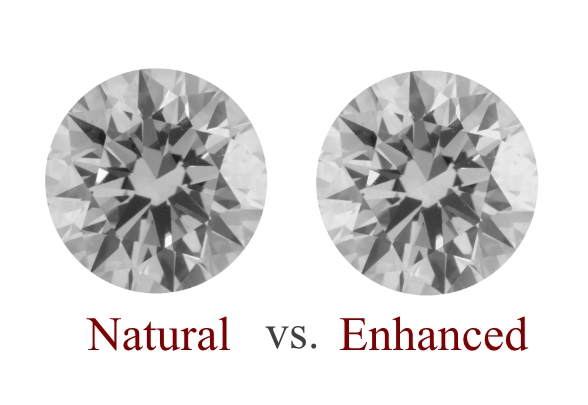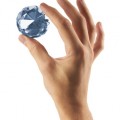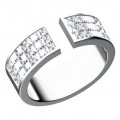What Is a Cushion Cut?
Cushion-cut diamonds have a rectangular or square shape, and their corners are rounded. The sides of these stones are not straight but curved, and their outline, which resembles that of a pillow, is the reason for the name “cushion cut.”

Types of Cushion Cuts
The original cushion cut is usually referred to as “cushion brilliant.”
This shape was created before the round cut became popular, and for a long time, cushion diamonds were the standard.
The classic cushion cut is also called “old mine cut” and is sometimes referred to as “antique-style cushion cut.”
It is worth noting that over time, the original cushion cut has been altered to improve brilliance.
While the older versions of this cut had smaller tables, larger facets, and bigger culets, the newer variations were “refined” on these characteristics to increase sparkle.
Despite that, many people still use the terms “old mine” and “antique” when referring to the modern cushion cut.
The modified cushion cut differs from the classic version in the number and form of the facets it has on its pavilion (i.e., its bottom). (From the top, the classic and modified cuts look more or less the same.)
There are different variations of the modified cut, and the main reasons they were created were to increase brilliance and reduce weight.
Check out a selection of cushion-cut diamonds and their prices.
Cushion Cut and Facet Patterns
Depending on how their facet patterns look, cushion-cut diamonds can be divided into two categories: “crushed-ice” and “chunky” cushion brilliants.
Crushed-ice diamonds do not exhibit a clearly identifiable facet pattern when looked at from the top.
They have a lot of sparkle, which seems to be all over the place when the stone is exposed to light.
Chunky cushion diamonds, in contrast, have a regular facet pattern when viewed from the top, and one can clearly see the shapes created by their facet lines.
Cushion-Cut Diamonds: Quality Characteristics
Here are the most important quality characteristics of cushion-cut diamonds:
Clarity
How clear a cushion-cut diamond looks depends on its sparkle and brilliance.
Therefore, cuts that have the “crushed ice” look tend to hide inclusions better as such diamonds have more sparkle.
Chunky cushion diamonds, on the other hand, can make certain flaws more visible because of the lower brilliance of these stones.
Generally, cushion diamonds of clarity grades lower than SI1 or SI2 are likely to exhibit obvious inclusions.
Color
Because cushion-cut diamonds have relatively lower brilliance compared with round stones, yellow tints tend to be more easily visible in cushion cuts.
In general, to find a stone that looks colorless to the naked eye, look for cushion diamonds with a color grade no lower than G or H.
Cut
When it comes to cushion diamonds, there are no definitive rules as to the ideal proportions of their cut.
Most cushion cuts have a table whose length is around 55-60% of the girdle, and their depth is about 60%.
As a rule of thumb, avoid diamonds that are too shallow or too deep, and try to get a stone whose table and depth ratios do not go over 70%.
Where to Buy Diamond Jewelry?
We recommend James Allen (read review) because you can see a 360-degree video for any diamond before buying it.
Blue Nile is another reputable diamond retailer we recommend.














